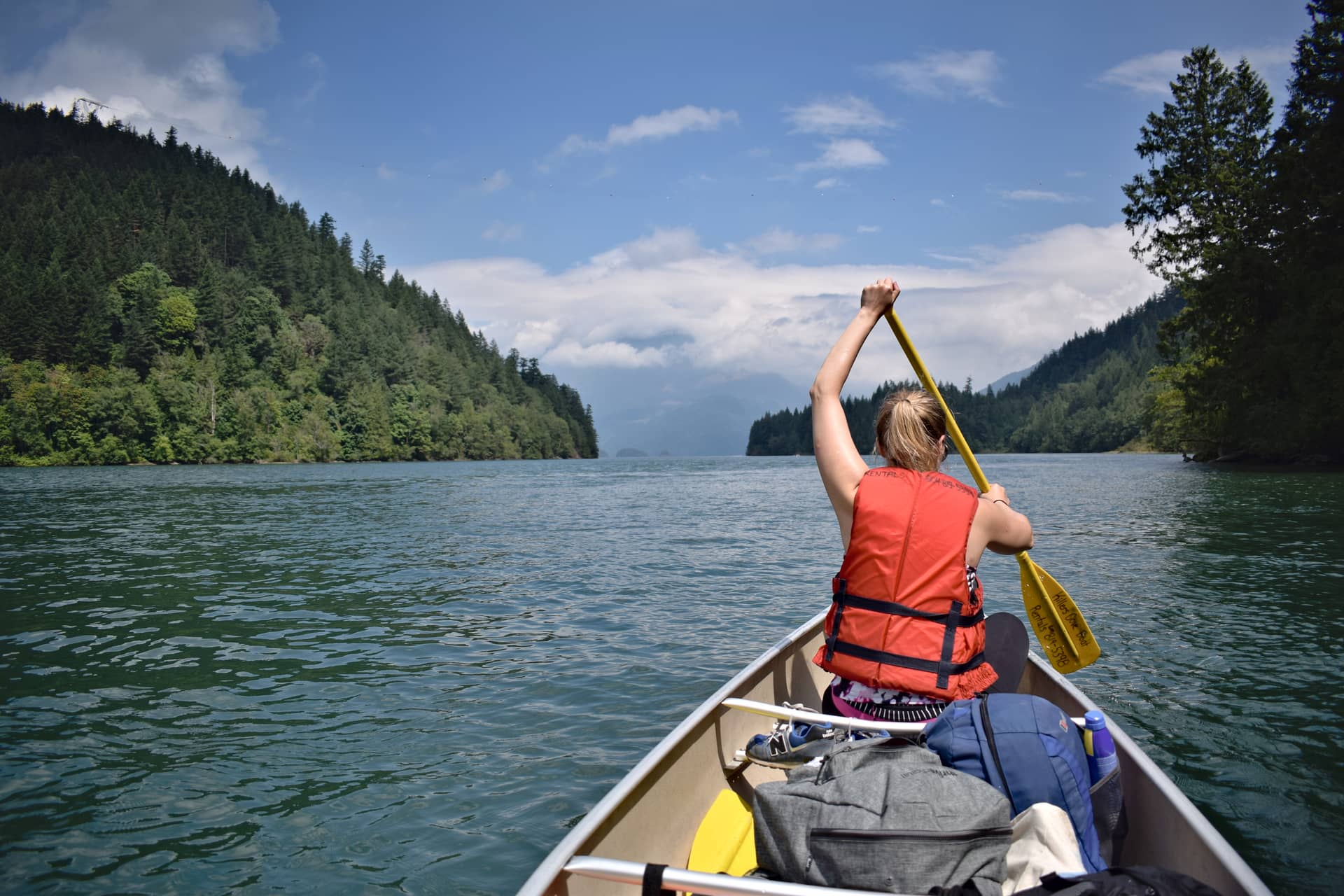
Route Details
-
Difficulty:Beginner Paddling
-
Distance:20 km
- Duration: 2 days
- Route Type: Out & Back
- Camping: Yes
Summary
Can you think of a more Canadian adventure than canoeing down the great rivers and lakes of British Columbia? The great news is it’s actually way easier than you think to organize a weekend trip with relatively little experience. Here’s a weekend itinerary to take the stress out of your trip with little effort, tons of fun, and only the stars at night for company. A group of 4 of us did this trip over two days, though you could easily extend for a further night and explore the river banks and other campgrounds.
The route begins by paddling across the lower part of Harrison Lake. This section can become more challenging on the return journey when the wind picks up in the afternoon. The afternoon wind conditions on this lake are the only reason I wouldn't recommend this paddle to first-timers. The wind can make coordinated paddling in couples a challenge!
The remainder of the paddle is on an easy-going river, with plenty of nature to explore along the shorelines. The paddle to Morris Lake requires about 3-4 hours of paddling, with the return journey usually taking 30-40% longer, depending on wind conditions. Typically the wind travels down Harrison Lake and channels into the river, so the journey to Morris Lake will be shorter than the return leg. Stay close to the banks to shelter from the wind as much as possible.
Navigation
-
Phone signal in BC is not reliable. Always carry an offline map. I recommend and use AllTrails+ for hiking or GaiaMaps for general adventuring. Google Maps does not always have reliable route mapping for backcountry adventures.
Conditions & Ability
Paddler Ability
The paddle to Morris Lake is not too difficult, though afternoon winds on Harrison Lake are likely to pose your biggest challenge. I would recommend having a few outings in a canoe before taking on this overnight trip, so that you’re used to working with your partner to paddle against the wind. Canoes are a little more unstable than kayaks, so definitely worth having paddled one before. The distance is manageable for those with moderate fitness. If you can run a 5k you can do this for sure. Take your time and enjoy the scenery. Need some paddling tips? Check out this quick guide on how to paddle a canoe. Note: As mentioned above, if you're a total newb I recommend you spend a few hours at the very least practicing your skills before taking on an overnight trip.
Tides & Currents
Since you're on a lake and river, you'll have no tides to worry about. Instead you have the very consistent flow of the river to contend with. The river flows north to south, meaning your outward travel to Morris Lake is easier and your return route a little more difficult. Generally however the current is not fast enough to slow you down too much.
Wind
Instead, you should pay more attention to the wind, which typically gets stronger as the day goes on. The northerly wind blowing down Harrison Lake makes for a more challenging paddle back to the lake if you leave it too late. Check the forecast before you go to see what winds you should expect and in what direction. When the wind picks up you can expect waves on Harrison Lake, and trust me when I say you don't want to fall in - the lake is very, very cold.
Waves & Other Boats
You won’t encounter much in the way of natural waves on the river. The lake can be a different story, especially when the (usually northerly) wind blows up in the afternoon. The lake is so long that the wind has time to generate bigger waves, which can be tiring to fight on your way home.
Top tip: If you see a boat wake approaching (wake is the wave that forms behind a boat), turn your kayak to face the wake. Your boat will be more stable when facing into the wave. This video gives a good demonstration of this technique.
Camping
-
Morris Lake Rec Site
As you arrive at Morris Lake, you'll see a cliff right in front of you. The campsite is right at the top of it. That gives you a reference point for when you start walking to it.
On your left, you'll see a low-lying section of land where you can exit your boat. To get to the campsite, follow the path up from the exit point until you reach the gravel road (about 3 mins). Turn right and walk along the road for about a minute until you spot an opening on the right, which will lead you after about 30 seconds to a scenic camp spot at the top of the cliffs. It’s likely you won’t see anyone else so make yourself at home – a hammock would work well at this spot! As far as I can tell it's not operated by anyone. Look after it, pack out what you pack in, and have a great time.
Campsites at Harrison Lake
To make your arrival at Harrison Lake a little easier, consider camping on a Friday night at Lakeside Campground (Deer Lake), or Hicks Lake Campground. That way you can pick up your canoes first thing Saturday.
Suggested Season
- Months: May - Sep
Location & Access
- Region: Western Fraser Valley
- Fire Region: Coastal Fire Centre
- Vancouver Day Trip: No
- From Vancouver: 2hr(s)
- Public Transit: Yes
- Public Transit By: BC Transit
Getting There
-
From Vancouver, drive east towards Abbotsford & Chilliwack. Another 15km beyond Chilliwack, take the junction signposted for Harrison Hot Springs. Follow the well-marked route until you reach the town. Parking along the take is generally paid, but on the streets further back is generally free. There are a couple of general stores in town if you urgently need last minute supplied, though I would recommend buying everything you need in advance.
-
If appropriate to reach this adventure, rent a car, or better still, reduce the demand for cars with Evo Car Share, Vancouver's car sharing network.
Detailed Itinerary
Harrison Lake
You begin your trip by paddling West across the South End of Harrison lake, until after about 30 minutes you hit the river mouth. For most of us canoeing is an occasional past-time, so by this point you’ll already feeling those new muscles burning.
Paddling the River
Fear not though, as you venture down the Harrison River and explore the coves and eddies, admire the wondrous secluded cabins, and debate the names of the wildlife none of you really know, this pain will soon be forgotten.
From here the river flows South West and is gentle and slow moving which makes it ideal for any level of paddler. Wind is likely to be your only enemy, so be sure to ask the rental shop for their opinion before you start. You’ll probably have the wind with you in one direction, and against you in the other. Take your time exploring the rocky sidings and wildlife and keep going for about an hour until the river opens up into a wide expanse of water, met on both sides by the mountain slopes tumbling into the river.
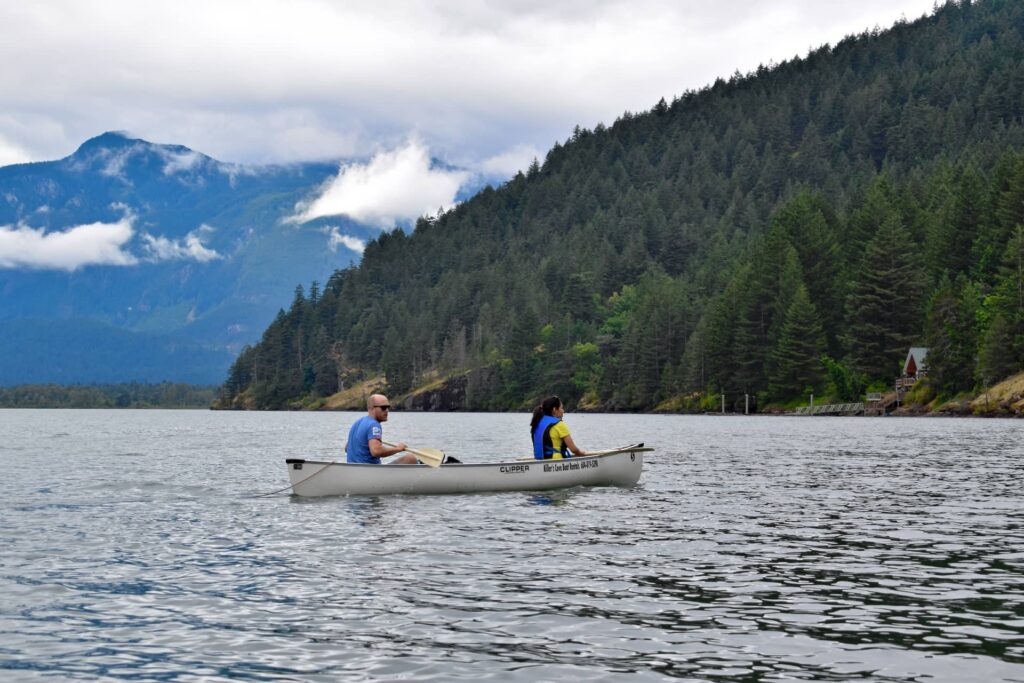
Fighting the Reeds
After another couple of hours you’ll meet a junction in the river (see the map at the bottom). Take the right hand junction, a smaller tributary which over a period of a couple of kilometers will turn you through about 150 degrees to face North East. Depending on the time of year this area can be fairly overgrown with reeds. It’s very easy to begin down what looks like a tributary, distracted by your partners apparent lack of effort, or the constant circles you find yourself going in. It is possible to push your way through these reeds, though you may find it easier to go round until you find the correct path. With a little luck, you’ll find the small channel which leads to Morris Lake, another 40 minutes or so through the reeds.
Morris Lake
You’ll reach a small lake with a steep rugged cliff face on the far side. On old burnt out car lies at the bottom of the cliff, not important in itself but is a good marker as to where the camp site is (at the top of the cliff). To the left of the bottom of the cliff you’ll find a shallow and convenient exit point where you can hop out easily from your canoes. If you’ve got a big lock with you, you may be able to find a tree down here at the bottom to lock up your canoes for the night. If not, we chose to carry the canoe’s in pairs upto the campsite.
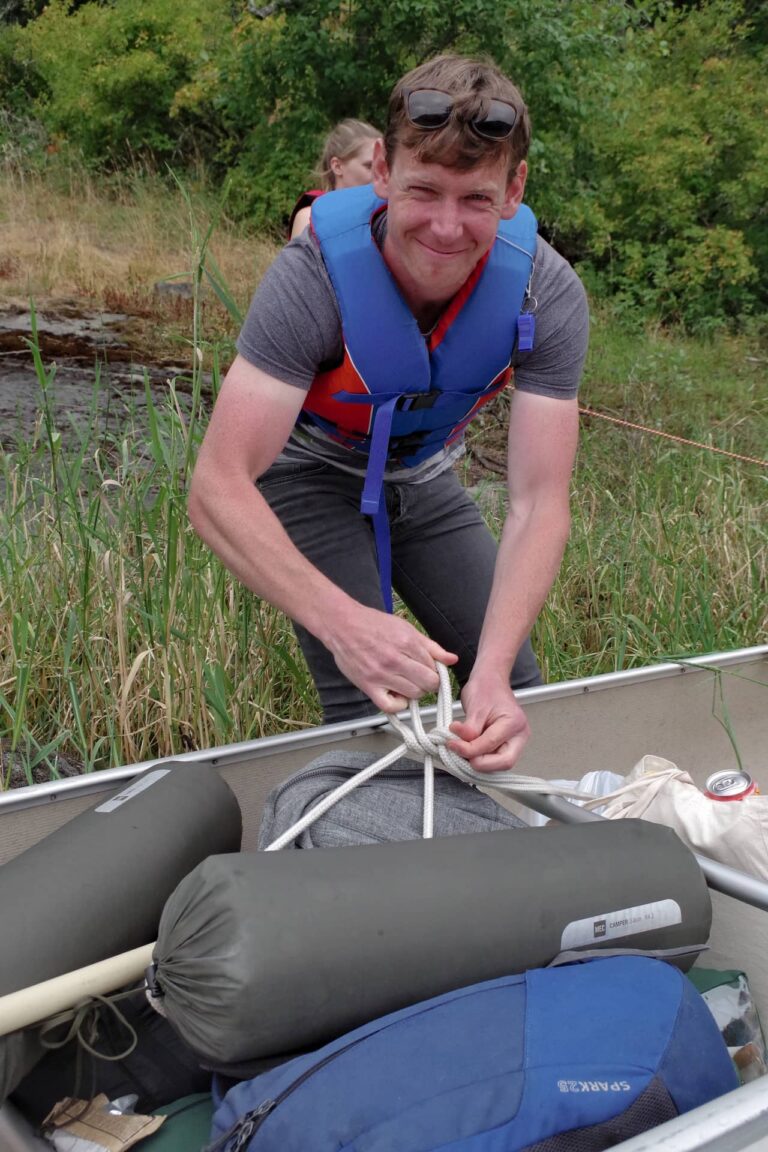
Morris Lake Campground
We camped here when we first arrived in Canada, one of our very first trips when we were totally clueless about the Canadian wilderness. (thankfully I had some paddling experience). When we camped here we sat on the cliff top until midnight or so with a beer in hand, listening to the low groaning sound of what we thought were two moose in the forests below, calling intermittently to each other as they got closer and closer throughout the night. Only 5 years later, and completely by chance would I discover that that noise is actually made by a particular species of frog!
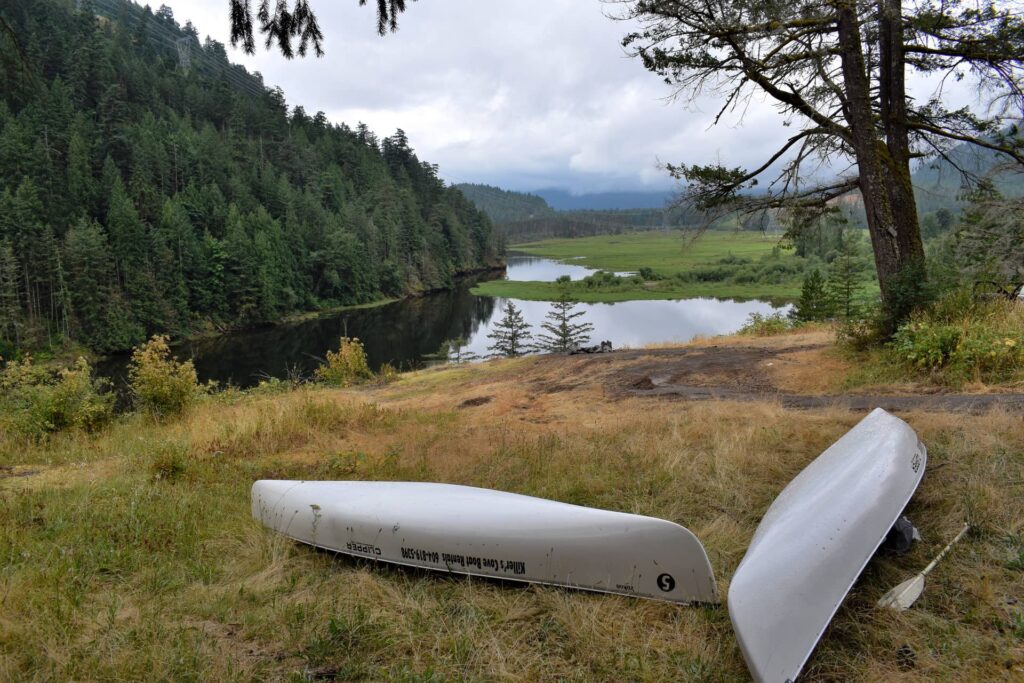
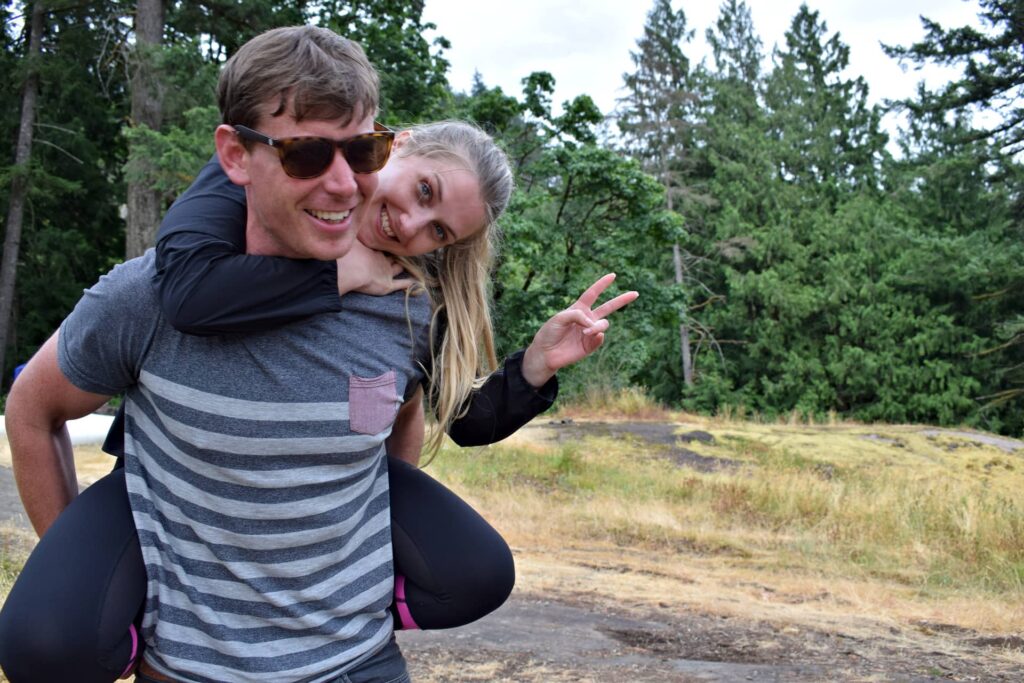
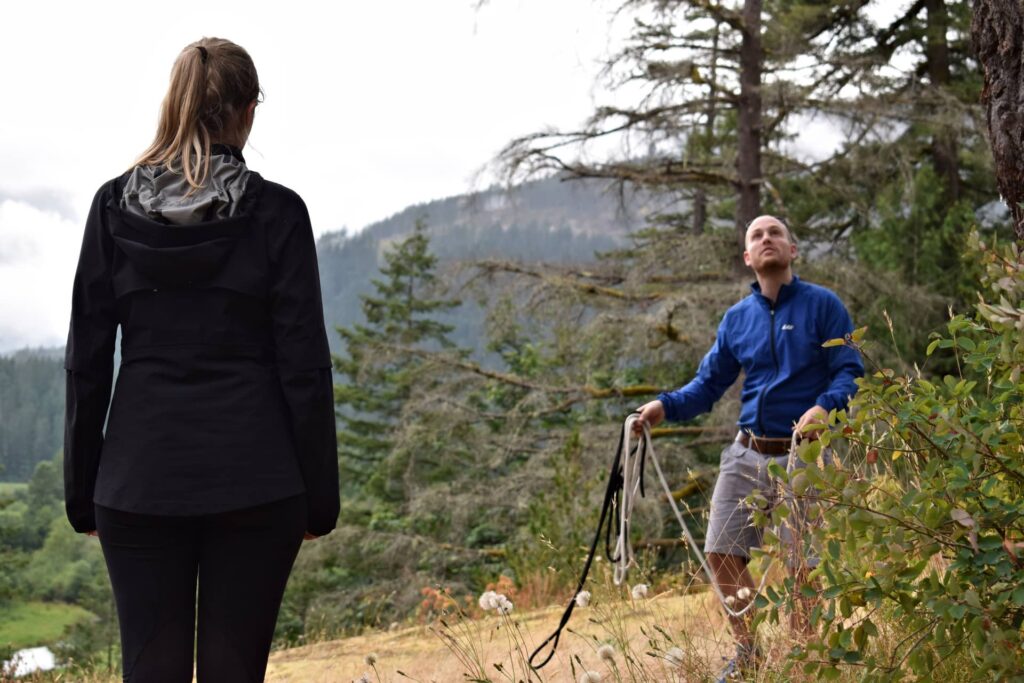
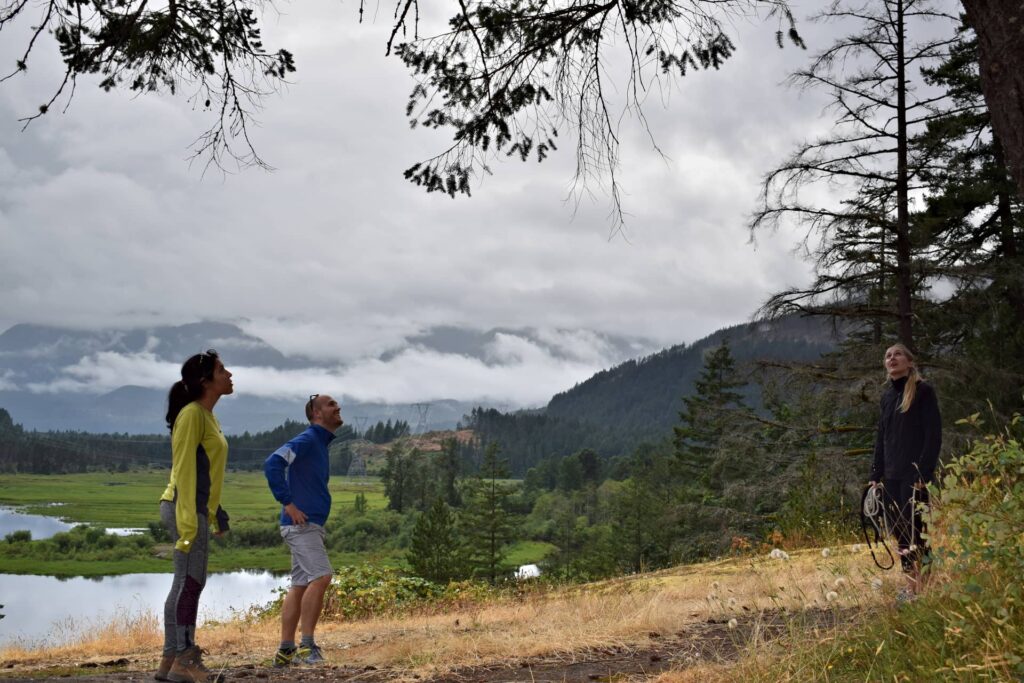
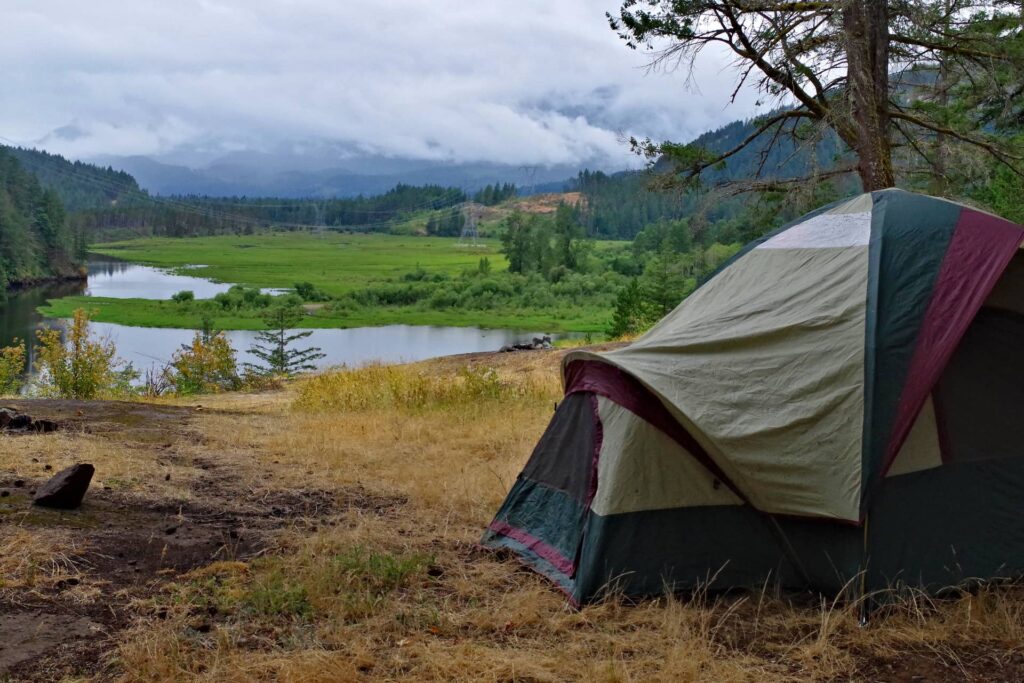
Paddling Back Up The River
The paddle back up the river is likely to take you significantly longer than on day 1, since the river is now flowing against you. Add to that wind that’s often blowing down from the lake and you’re in for a decent slog. Stay close to the banks to avoid the wind as much as possible. Once you get to the lake you may find it surprisingly windy. Again stay close to the shore and take breaks at the many little beaches along the way as you make your way back to the rental shop.
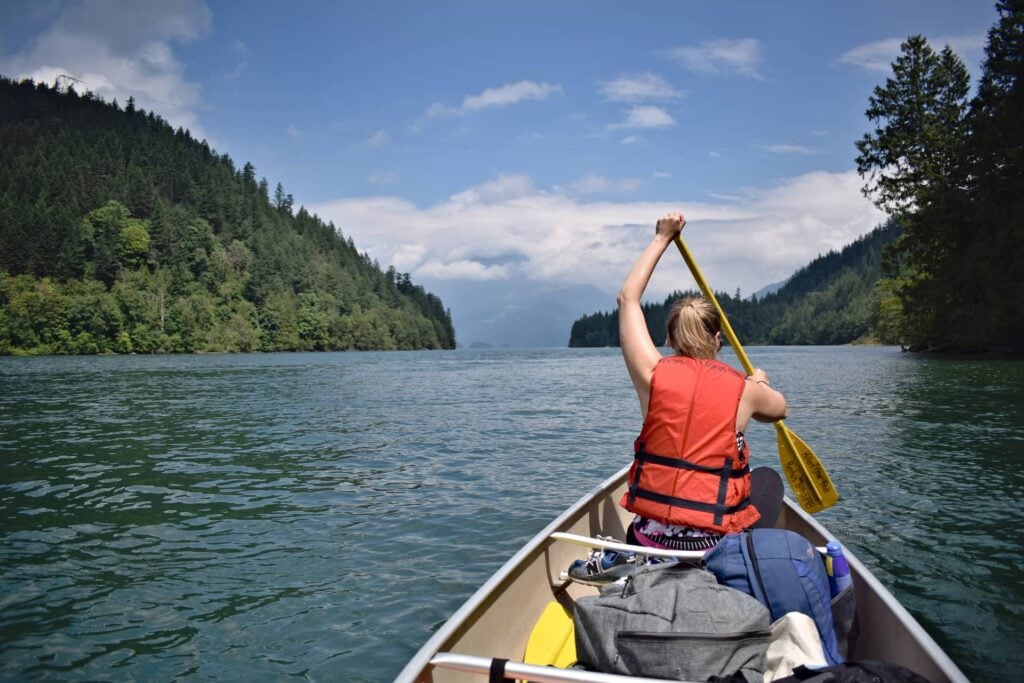

Add Review